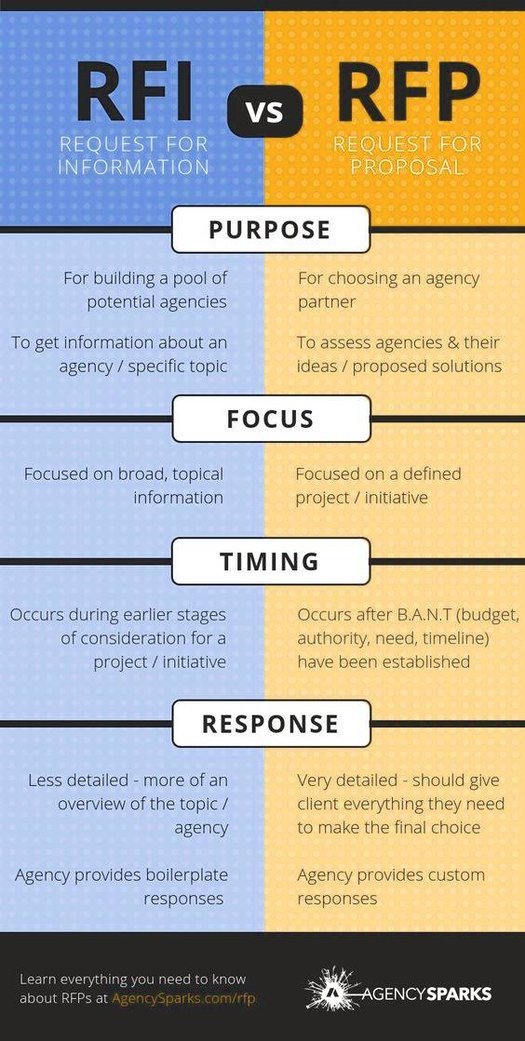
RFI, RFP and RFQ are vital tools that can be used to achieve a successful sourcing solution. The key difference between RFI, RFP and RFQ is that RFI (Request For Information) is a document used to collect information from different suppliers in order to decide from which supplier the company should sources products or services whereas RFP …
RFP An RFP, “Request for Proposal,” is a document that asks vendors to propose solutions to a customer’s problems or business requirements. An RFP is usually what follows an RFI; in fact, it’s rare that a company will go from an RFI to an RFQ (for reasons that will become clear below).
An RFI is a solicitation that procurement sends to a broad base of potential suppliers. Its purpose is for conditioning, gaining information, preparing for an RFP or RFQ, forming a strategy, or building a database. These facets are useful in later supplier negotiations about: Breadth and width of product/service offerings, by the supplier
RFI vs RFP Explained
